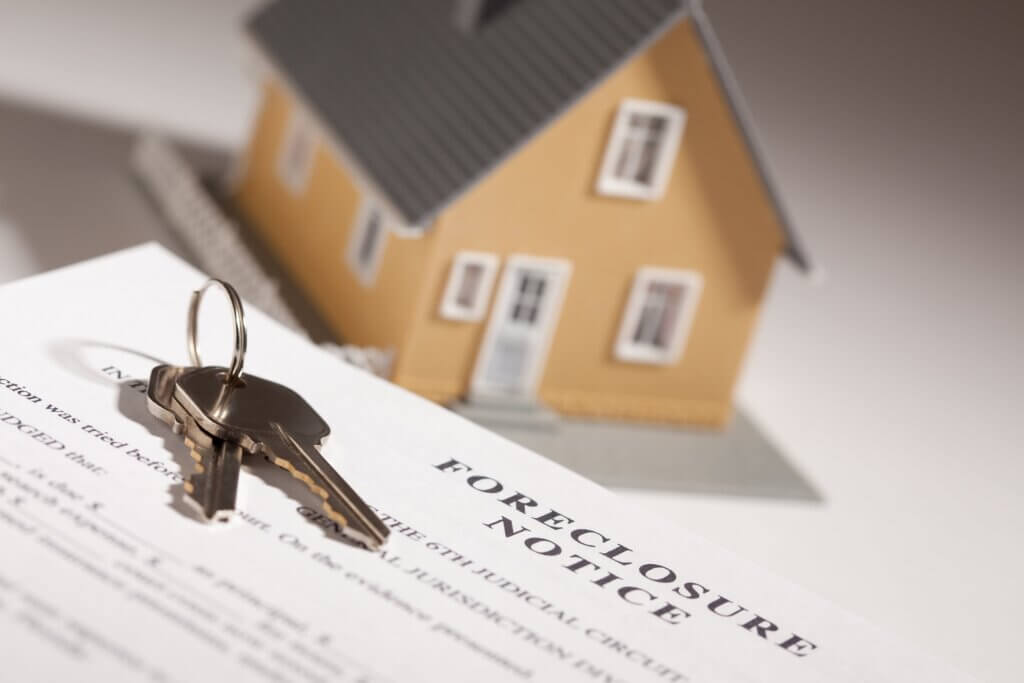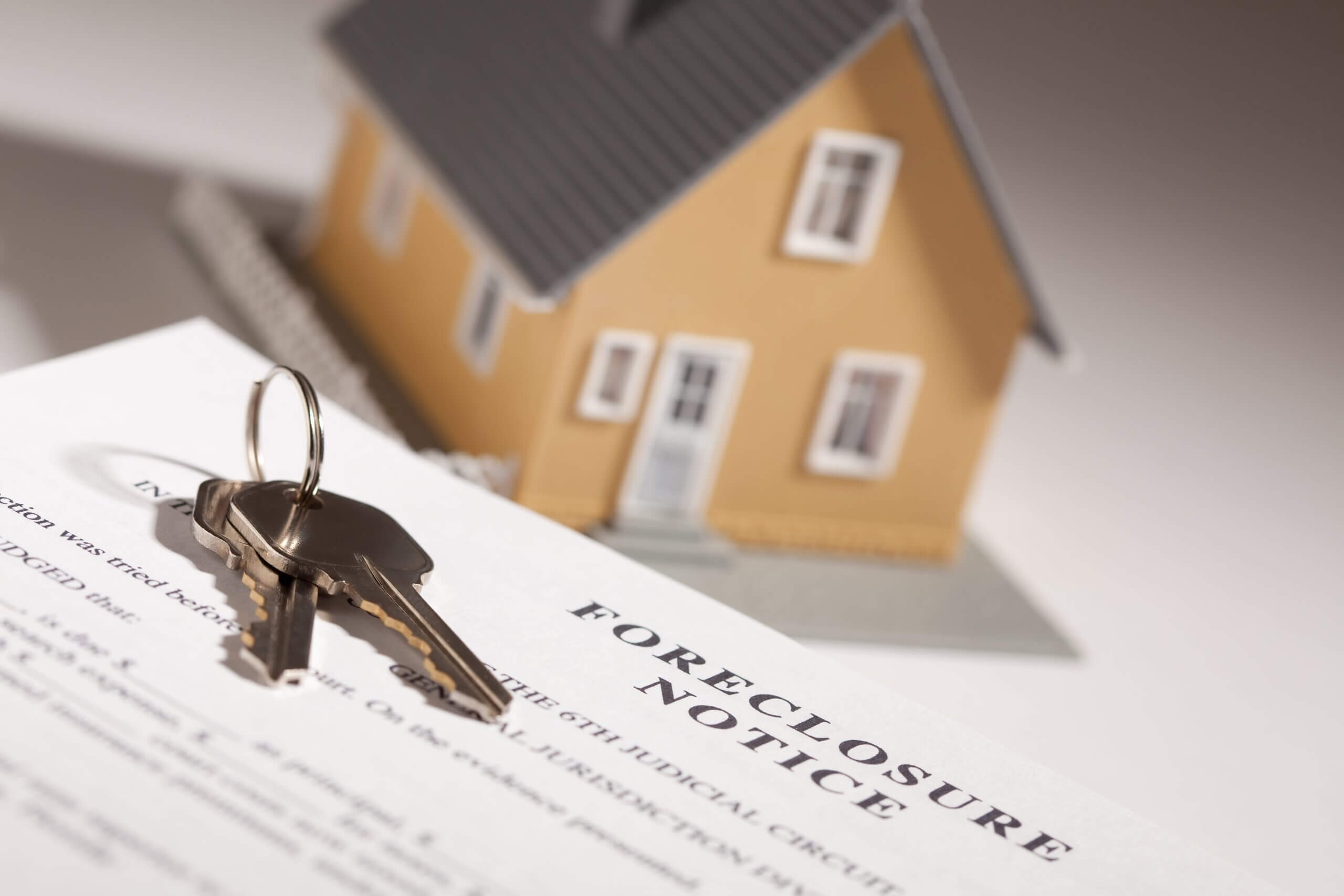Written By:
 Scott Glatstian
Scott Glatstian
Your Dedicated & Trusted Legal Team
3 Generations & 100+ Years of Combined Legal Experience

A foreclosure on a home is a reality many Americans face. In 2021, 92,346 residences were foreclosed. Although foreclosures are currently at an all-time low, 2009 saw 2,139,005 foreclosures in a single year. Granted, economic events like the one that occurred in 2009 are rare, but there is always the looming risk of severe economic downturn increasing the number of potential foreclosures in the future.
Regardless, even today’s low numbers still approach 100,000 each year, certainly not an insignificant number. It’s best to be prepared when it comes to the risk of foreclosure, regardless of whether a foreclosure is on the horizon or not. This article will guide readers through an overview of how bankruptcy can be used as a defense to an impending foreclosure on a home.
What Is Foreclosure, Exactly?
Most Americans cannot outright purchase a home. On the low end, the average 3-bedroom house in West Virginia is $91,493, while on the more expensive end, the average 3-bedroom in California is $646,279. However, people still need to be able to purchase these homes somehow.
Americans are able to purchase a home by taking out a type of loan known as a mortgage from a lender, typically a bank. A loan is given to the new homeowner, and the new house is used as collateral, or in other words, the house is used to assure the bank you will pay the loan, or else they will be entitled to take over ownership of the house. A mortgage comes with a substantial down payment, usually around 20% of the overall value of the home. The rest is paid off via a payment plan over a predetermined number of years, usually in monthly installments.
If a person with a mortgage falls behind on their payments, the mortgage lender can repossess the house. Every state has a different foreclosure process that lenders must follow. Usually, it takes about three or four missed payments before a lender would even think about initiating the foreclosure process. However, foreclosure does happen on a frequent basis, and we will illustrate the concept with an example.
Mortgage and Foreclosure Example
Let’s say Frank is looking to purchase a home for him and his family. Frank finds his dream home, but it costs $350,000. Frank cannot afford this, so he works with a bank and the bank approves him for a mortgage loan. Frank agrees to a 20% down payment of $70,000 and the mortgage term is set for 30 years with $1,700 in monthly mortgage payments. Frank is now able to move into his dream home!
Let’s say about five years in, Frank is laid off from work. Frank is having trouble finding a new job, and without a constant stream of income, he begins to have issues making his monthly $1,700 payments. After enough months pass by with no mortgage payment from Frank, the bank decides to take back his house through foreclosure, effectively resulting in Frank and his family being evicted from their home. So what can Frank do to avoid this? One viable route is through bankruptcy.
What Is Bankruptcy?
Most Americans view bankruptcy as a bad thing. In a way, they’re correct, because declaring bankruptcy is usually the result of a particularly bad financial situation. However, bankruptcy often serves as a remedy to that poor financial situation.
When an individual or entity can no longer pay its creditors, or the individuals or organizations it owes money to, they have the option to file for bankruptcy. If approved by a court, the judge can issue a “stay,” which informs all creditors to stop collecting payments for loans. This can also include mortgage loans, and if bankruptcy is declared before the home is officially foreclosed, then the foreclosure can be halted.
Although there are many types of bankruptcy, we will primarily focus on Chapter 7 and Chapter 13, which are the two crucial bankruptcy types to help with a foreclosure. Chapter 7 will result in temporarily delaying the foreclosure, while Chapter 13 can stop a foreclosure process altogether, as long as the individual can afford the predetermined monthly or biweekly payments.
What Type of Bankruptcy Should Someone Like Frank File for?
The answer to this question depends on Frank’s situation. If Frank still has no job prospects, then Chapter 7 is likely a good option for him. He’s able to reorganize his finances and delay the foreclosure by three or four months, giving him more time to come up with a plan to make sure he and his family can find a back-up residence. The drawback is that there is no option for repayment to catch up on his missed payments. So although Chapter 7 would delay the foreclosure, the bank would be free to resume the foreclosure process once the three- to four-month delay is over.
However, if Frank has a lucrative new job lined up that pays well enough for him to keep his house, then he can file for Chapter 13 bankruptcy, allowing him to keep his home and buying him time to “catch up” on his late mortgage payments. Because Chapter 13 grants many privileges to Frank despite missing his payments, it is more difficult to file for than Chapter 7. Chapter 13 repayment plans usually occur over the span of three to five years, typically on a monthly or biweekly basis. Although the payments are predetermined when Frank meets with the judge and creditors, there could be flexibility as to what those payments will be, depending on what the judge and creditors agree to.
Frank’s income and living expenses will be scrutinized heavily in order to determine if he is capable of making the bankruptcy payments for Chapter 13. In order to be approved, the court will assign a trustee to oversee the process, then Frank will meet with the trustee, his creditors and a bankruptcy judge to go over the proposed plan. If approved, he will need to start making his payments immediately. Regardless of whether Chapter 7 or Chapter 13 seems like a good option to Frank, it will be crucial that he meet with an attorney knowledgeable in bankruptcy law in order to find the best option for his situation.
What if Frank has Multiple Mortgages?
Another situation people may face is holding multiple mortgages. Chapter 13 bankruptcy can also assist in remedying other mortgages. In some cases, the bankruptcy courts can decide to consolidate, or combine the other mortgages into one general debt that the filer owes. This debt can then be incorporated into the payment plan.
Turning back to Frank to illustrate this, let’s say Frank found a better dream home and decided to move out of his original home and into the new one. However, the new home is more expensive, and due to a drop in the housing market, Frank’s old home has lost value and the sale is not enough to cover the full cost of his original mortgage. In this case, Frank would need to not only open up a second mortgage for his new home, but also continue to pay off what’s left of the original home’s mortgage.
If Frank needs to file for bankruptcy, then the court can create a plan for him that not only covers his current home, but also considers the mortgage he owes on his old home. But again, this additional cost to Frank will certainly be a factor in the court’s decision to approve his filing for Chapter 13 bankruptcy. Chapter 13 bankruptcy is incredibly complicated with a lot of moving parts that vary from state to state, and an attorney versed in bankruptcy law is all but necessary for Frank to make an informed decision.
What Are Some Other Factors That Need to be Considered Before Bankruptcy?
Frank’s financial history is also going to be important. If Frank has a history of filing for bankruptcy, especially if he has already filed for bankruptcy in the same year, then his options will be more limited. A court may view Frank as someone who is attempting to abuse the bankruptcy system in order to thwart the plans of his creditors.
Additionally, if filing specifically for Chapter 13 bankruptcy, Frank may run into an issue if his home equity is greater than what the state allows for bankruptcy protection. Each state has something called a “homestead exemption” that lays out the amount that can be covered under Chapter 13, and it can vary greatly from state to state. Some states have no limit, while others have a lower cap.
For example, let’s say Frank has paid $100,000 of his $350,000 mortgage. This makes Frank’s equity $100,000. If Frank lives in a state that only covers up to $50,000 in equity, then he will be required to pay the difference of $50,000 as part of his Chapter 13 bankruptcy repayment plan. Obviously, this could certainly bar Frank from filing for Chapter 13 if his current financial situation would not allow him to pay that substantial amount of money on top of his current and missed mortgage payments. It is incredibly important that Frank consult with an attorney with bankruptcy experience in order to figure out his best option when it comes to filing for bankruptcy.
Why Hire an Attorney?
No matter how good your financial outlook might be, a downturn in the market is dangerous and unpredictable. Even the most sound of financial plans are always at risk. While it’s difficult to contemplate such things happening, it’s always best to plan for them before they occur, rather than be caught up in a stressful living situation. Thankfully, a practiced bankruptcy lawyer can provide valuable guidance, helping to prepare an individual for all the risks associated with homeownership.
At Rosenblum Law, we support our clients through every step of the process when it comes to foreclosure issues and bankruptcy remedies. In fact, Rosenblum Law offers numerous estate planning and financial legal services that would benefit any homeowner, regardless of whether they are simply preparing for the future or actively facing a legal or financial issue. Call us now to get started with a free consultation.

 Scott Glatstian
Scott Glatstian
About The Author
Scott is an Of Counsel Attorney for Rosenblum Law. He is a graduate of Syracuse University College of Law and received his undergraduate degree from Rutgers University.
Read MoreLatest from Our Blog



Editorial Standards
Rosenblum Law is committed to delivering informative content of the highest quality. All content is subject to our rigorous editorial standards for relevance, accuracy, sourcing, and objectivity. Everything is fact-checked by an editor and reviewed for legal soundness by one of our practicing attorneys prior to being published.
How to Cite Rosenblum Law’s Article
APA
Scott Glatstian (Oct 13, 2022). 4 Bad Reasons to Delay Filing for Bankruptcy. Rosenblum Law Firm, https://rosenblumlaw.com/bad-reasons-to-delay-bankruptcy/
MLA
Scott Glatstian "4 Bad Reasons to Delay Filing for Bankruptcy". Rosenblum Law Firm, Oct 13, 2022. https://rosenblumlaw.com/bad-reasons-to-delay-bankruptcy/




